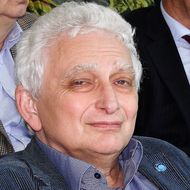Публикации
Нашли опечатку?
Выделите её, нажмите Ctrl+Enter и отправьте нам уведомление. Спасибо за участие!
Сервис предназначен только для отправки сообщений об орфографических и пунктуационных ошибках.

Заведующий научной лабораторией
Тел: +7(495)772-95-90 *15161
E-mail: ekrouk@hse.ru
123458 Москва, Таллинская ул. 34, ауд. 234

Заведующий научной лабораторией
Тел: +7(495)772-95-90 *15161
E-mail: ekrouk@hse.ru
123458 Москва, Таллинская ул. 34, ауд. 234
Нашли опечатку?
Выделите её, нажмите Ctrl+Enter и отправьте нам уведомление. Спасибо за участие!
Сервис предназначен только для отправки сообщений об орфографических и пунктуационных ошибках.
Шрифты HSE Sans и HSE Slab разработаны в Школе дизайна НИУ ВШЭ